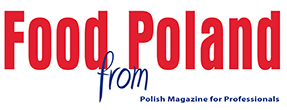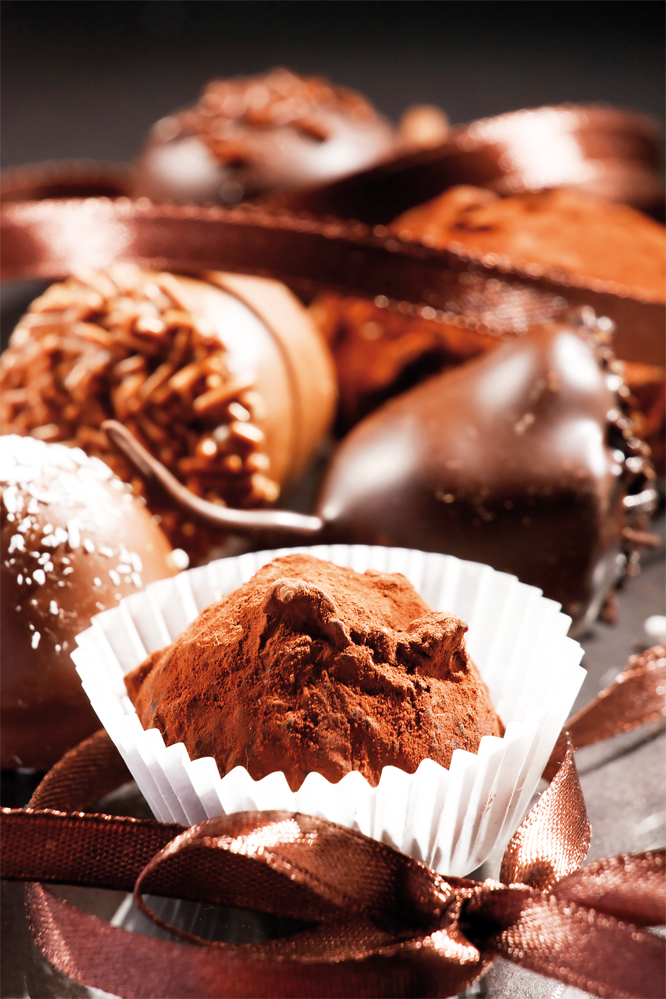In the first half of 2011, sweets were the most valuable item in both the export and import of Polish sugar as well as confectionery products. Their export rose by 9% to 106.1 thousand tons, and its value increased by 15% to €437.4 million. At the same time, import was higher by 13%, rising thereby to nearly 64 thousand tons. The value of imported sweets also increased by 13% and amounted to €190.3 million.
An Outline of The Sweets Market
The positive trade balance amounted to €247.1 million (up by 17%) and 42.1 thousand tons (3%). The Export of confectionery products without cocoa dropped noticeably - both in terms of volume and value turnover. However, as far as trading chocolate products is concerned, higher growth rates of export than import can be seen. In terms of volume, nearly ⅔ of sweets imported were chocolate products. Their share in terms of value was even higher and amounted to almost 71%. As far as the export of sweets is concerned - chocolate products accounted for 78% of its volume and 83% of its value.
In this period, the volume of exported goods marked with the code 1704 CN and 1806 CN, i.e. confectionery products containing no cocoa, as well as with cocoa, accounted for 35.0% in amount (the previous year - 21.7%) and 83.9% in value (the previous year 74.8%) of the export of the group of goods including sugar, the sugar industry and confectionery products. In the export of agricultural and food products, sweets accounted for a total of 2.0% in terms of quantity (1.6% in the first half of 2010) and 6.2% of its value (6.1% in the previous year). The share of sweets in the import of the goods group including sugar, products of the sugar industry and confectionery products in this period was 15.7% in terms of volume (23.8% the previous year) and 53.9% of the value (68.9% in the first six months of 2010). While the import of sweets accounted for 0.7% of shares, (also 0.7% the previous year) in the import of agricultural and food products, in total in terms of quantity and 3.2% of its value (3.3% the previous year). The increase of the shares of sweets in the export of sugar and confectionery products was caused by a sudden drop in sugar export. While a smaller share of import is the result of increased import of sugar and molasses.
Chocolate Products
Like in the previous year, chocolate products (confectionery products containing cocoa) were the most valuable item in the export and import of the Polish sugar and confectionery industry. In the first half of 2011, the Polish foreign trade turnover in these products closed with a positive balance of €228.6 million, increasing by 29% from €177.8 million in the corresponding period of 2010 (€122.6 million in the first six months of 2009). This happened due to the higher growth rate in export than import. In the first half of 2011, 83.2 thousand tons of chocolate sweets were exported, obtaining from them nearly €363.5 million (72.5 thousand for €300.2 million in the corresponding period of 2010). The volume of export was higher by 15%, and its value increased by 21%. At the same time the volume of import increased by 5% to 40.9 thousand tons, and its value was higher by 10%, rising to €134.9 million. In terms of volume, the positive balance increased by more than a quarter to 42.2 thousand tons (compared to 33.4 thousand tons a year earlier and 23.8 thousand tons in the first six months of 2009).
Export
The highest recorded export of chocolate products were exported to EU countries – over ¾ of export was sent to the EU-26 markets. These countries bought from Poland 63.9 thousand tons of confectionery containing cocoa for €276.6 million. This represents an increase of 12% and 19%, respectively. To the 15 EU Member States 46.3 thousand tons were sent (22%) worth €211.7 million (+23%). Also Turkey and Russia were significant export markets. Most Polish confectionery products containing cocoa were sent once again to the UK - 26.8 thousand tons (up by ⅔), for which €95.9 million (up by half) was received. This accounted for nearly a third of the shares in export in terms of volume. Also Germany (down by 9% to 5.8 thousand tons, 7% share), The Czech Republic (5.4 thousand tons, 6% share), Russia (4 thousand tons, increase by more than a third), Hungary and Turkey, as well as Italy, the Netherlands and France, were major export markets. Within the commodity structure of export, having achieved more than a double increase in volume, the domination of the other filled chocolates (CN 1806 90 31) was outlined. Their export amounted to 23.5 thousand tons (28% share) and the value was close to 112 million tons (up by ¾), which accounted for a 31% share. The next place was taken by spreadable products containing cocoa (CN 1806 90 60), where more than 10.5 thousand tons were sold outside the Polish borders for €28.6 million. This accounted for 13%, quantitatively and 8% in terms of value in the structure of export. The third place was taken by other food preparation products containing cocoa with filling (CN 1806 90 90), which were exported in the amount of 9 thousand tons (11% share) for €73.6 million (20% share). Slightly less chocolate products in blocks, slabs or bars were sold abroad (code CN 1806 31 00). The volume of their export amounted to 8.5 thousand tons (10% share) with a value of €29.8 million (8% share) and the products with code CN 1806 32 90, 7 thousand tons for €27.2 million. In the first half of 2011 export of chocolate products was 69.7% (59.1% a year earlier) in value and 27.5% (16.1% in the corresponding period of 2010) in quantity for the group of commodities including sugar and products of the sugar and confectionery industry. While shares in the export of agricultural and food products in total amounted to 1.6%, in terms of quantity (1.2% a year earlier) and 5.1% (4.8% a year earlier) in terms of value.
Import
Confectionery products containing cocoa were imported during this period almost entirely from EU countries – in the EU-26 countries, 98% of products labelled with the custom tariff code CN 1806 were purchased in terms of value and quantity in total. Imports from the 15 EU Member States accounted for 83% in terms of quantity and 85% in terms of value. Almost 34 thousand tons (12%) for €114.7 million (13%) was purchased in the 15 EU Member States. In the first half of 2011 third world countries have not played a significant role in supplying Poland with sweets containing cocoa. Import from Switzerland decreased by 22% to 258 tons. Purchases from Côte d'Ivoire, which is the largest producer of cocoa beans in the world, decreased by 40% to 230 tons. Their total share slightly exceeded 1% of import. For many years, the main supplier of chocolate products to the Polish market has been Germany, from which 20.8 thousand tons (19%) for €71.5 million (21%) was imported. Imports from Germany accounted for half of the sweets containing cocoa coming into Poland. Also Italy (4 thousand tons, an increase of 22% accounted for a 10% share), Czech Republic (3 thousand tons), Belgium (2.3 thousand tons) were much smaller suppliers of chocolate products on the Polish market. To a minor extent also the Netherlands and Austria were suppliers of chocolate products.
The commodity structure of Polish imports of confectionery products containing cocoa was dominated by three products. The first item of these products were products marked with the code CN 1806 20 95 (other food products containing cocoa in blocks, slabs or bars weighing more than 2 kg or in liquids, pastes, powders, granular or other bulk form, in containers or immediate packaging, with a content exceeding 2 kg), which were imported in the amount of 7.1 thousand tons for nearly €18.4 million (17% share in terms of quantity and 14% in terms of value). The second group were the other food preparations with cocoa in blocks, slabs or bars, filled (CN 1806 31 00). In terms of volume, imports of these goods fell by 1% to almost 6.7 thousand tons. This accounted for 16% share in imports of the goods in terms of quantity. The value of purchases increased by 7% to €26.7 million, which accounted for a fifth of the purchasing of confectionery products containing cocoa in total (the largest amount in terms of value). The products of code CN 1806 20 10 were in third place (other preparations in blocks, slabs or bars weighing more than 2 kg or in liquids, pastes, powders, granular or other bulk form in containers or immediate packaging, with a content exceeding 2 kg containing 31% or more of cocoa butter or containing 31% or more of cocoa butter and milk fat in total). Their import approached 5.1 thousand tons, and the value €14.3 million (shares of respectively, 12% and 11%). Products of codes CN 1806 90 19 (3.2 thousand tons) and 1806 32 10 (also 3.2 thousand tons) as well as 1806 90 60 and 1806 90 31 and 1806 32 90 were on the following positions. In the first half of 2011 imports of chocolate products accounted for 2.3%, (2.4% in the corresponding period of 2010) with a value of 0.5% (0.5% a year earlier), of the quantity of the imports of agricultural and food products in total. Shares in the import of the group of commodities including sugar, the sugar industry products and confectionery products amounted to 38.2% (49.9% a year earlier) in terms of value and 10.1% (16.5% a year earlier) in terms of volume.
Sweets with No Cocoa Content
The group of confectionery products with no cocoa content includes: chewing gum, liquorice extract, white chocolate, pastilles, drops (including the sore throat drops), sugar-coated confectionery products, gel products and jellies, boiled candies (also filled), toffee candies, caramels, compressed tablets in sugar confectionery. The volume of exports of these products in the first half of 2011 fell by over 8% to 22.9 thousand tons (25.1 thousand tons a year earlier). The value of exported goods decreased by nearly 8% to €73.9 million (€79.9 million in the corresponding period of 2010). In the same time, 23 thousand tons of sweets (increase by a third from 17.4 thousand tons) for €55.3 million were imported to Poland, which is up by a fifth compared to €46.3 million in the first half of 2010. The positive balance of trade decreased by as much as 45% to €18.5 million (compared to €33.6 million previously). In terms of volume a surplus of import over export was recorded for the first time, while the balance has dropped from +7.7% to -0.08 thousand tons. In previous years, the product group discussed was characterized by a high positive balance. The negative balance in terms of volume is due to a decrease in export and the rapid growth of cheap imports (import prices in the first half of 2011 are 10% lower than in the corresponding period of the previous year).
Export
As in previous years, also in the first half of 2011, the main export commodities were commodities marked with the CN 1704 90 99 code (other confectionery products without cocoa). In foreign markets, 7.8 thousand tons (less by 22%) of these products for the amount of €30.5 million (-23%) were sold. This shows a 41% share in terms of value and 34% in terms of volume. In the second place were toffee candies, and caramels (code CN 1704 90 75). Export of these sweets amounted to 7.3 thousand tons (-6%, 32% share) amounting to €16.4 million (-5%, 22% share). The positions that followed were boiled candies, including the filled ones (CN 1704 90 71 code), which were sold outside Polish borders in the amount of 3.9 thousand tons (17% share) for €9.9 million (13% share). Also products marked with the CN 1704 90 65 code and other sugar-covered products (CN 1704 90 61) were an important product in the export structure. Also white chocolate (CN 1704 90 30) was an important product, to a lesser extent, however.
The most important outlets for Polish confectionery products without the content of cocoa are still the countries of the European Union, where almost ⅔ of export was sent (14.6 thousand tons for €51.4 million). In the EU- 15 Member States’ market, 9.6 thousand tons of these products have been sold with a value of €32.9 million. Up to 10% of export was sent to CIS [Commonwealth of Independent States]. Less than a fifth was sent to other third world countries and 5% to the countries which are members of NAFTA, i.e. to Canada and the USA.
The main customers of Polish sweets without the content of cocoa in the first half of 2011 were Germany and Russia, which accounted for a fifth and 8%, respectively of the share in terms of volume. Germans bought more than 4.5 thousand tons of the products above for €12.7 million.
While 1.8 thousand tons with a value of €4.1 million was sent to Russia. In terms of quantity, shipping to Germany was lower by a fifth, to Russia it fell by as much as 48%. Other important export markets were also The Czech Republic, Saudi Arabia, Hungary and The United Kingdom. In the analysed period, export of confectionery products without the content of cocoa accounted for 7.6% in terms of quantity and 14.2% in terms of export value for the group of goods including sugar, the products of the sugar industry and confectionery products. In the first half of 2010, this share amounted to 5.6% and 15.7%. While the export of confectionery products without the content of cocoa accounted for 1.0% (1.3% a year earlier) in terms of the total export value of agricultural and food products and 0.4% of its quantity (also 0.4% in the previous year).
Import
Other gel products and jellies including fruit pastes in the form of confectionery (CN 1704 90 65) accounted for 35% of the import of sweets without cocoa content, which were imported in the amount of 8.1 thousand tons (nearly three quarters more) for €12.7 million (11%). The Increase by 11% allowed to achieve 14% shares in terms of quantity for sugar-coated products (code CN 1704 90 61), which were imported in the amount of 3.1 thousand tons for €8.4 million. For slightly less, boiled candies, including the filled ones (CN 1704 90 71) had 2.9 thousand tons imported. Toffee, caramels and similar candies were purchased for 75, 2.4 thousand tons (CN 1704 90). Their share in total import of sweets without the content of cocoa amounted to 13% and 10%, respectively in terms of volume. The main suppliers of products of the CN 1704 code to the Polish market included the EU countries, from where about 85% of these products were imported. Imports from the EU-26 amounted to 19.5 thousand tons (34%) with a value of €46.5 million (17%). From EU-15 Member States 13.2 thousand tons with a value of €39.3 million were imported to Poland. This accounted for a 57% share in terms of volume and 71% in terms of value in the import of these products to Poland. As in previous years, as well as in the first half of 2011, confectionery without the content of cocoa were imported mainly from Germany - 7.1 thousand tons with a value of €21.8 million, which accounted for 31% shares in terms of quantity and 40% in terms of value. The volume of imports from this country increased by 11%, and its value by 14%. Having increased three and a half times to 4.6 thousand tons. The second place was taken by the Czech Republic (a fifth of the shares).
The next positions were taken by the Netherlands and Spain (respectively 2.2 and 1.1 thousand tons). An 87% increase of purchases in Belgium (up to a thousand tons) is also worth noting, so this country has gained a significant position as a supplier of confectionery without the content of cocoa (4% share). Amongst the third world countries, the important suppliers were Colombia (4% share), Ecuador and Turkey (both 3%). In the first half of 2011, imports of confectionery products without the content of cocoa accounted for 0.9% (also 0.9% share in the corresponding period of 2010) of the share in terms of value and 0.3% (0.2% the previous year) of the quantity of import for agricultural and food products in general. Shares in the group of commodities including sugar, products of the sugar industry and confectionery products in this period amounted to 5.7% (7.3% a year earlier) in amount with shares of 15.7% (18.9% in the first six months of 2010) of the value of the imports in this group. Despite the difficult situation in the international market, you can easily say that sweets should not be worried about the crisis, and certainly not as much as other fast moving consumer goods. Polish sweets are enjoyed and are highly valued in many countries around the world, year by year we gain new loyal groups of consumers.












